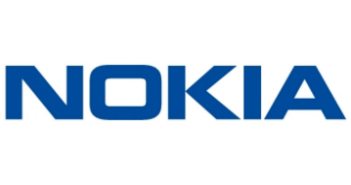Nokia Networks announced a wide-reaching set of portfolio enhancements today in support of their Liquid Radio portfolio. As these announcements are touching on many different aspects of the portfolio, I will try to group them into sub-classifications.
Carrier Aggregation
In order to increase density in metro areas through macro networks, the Flexi Metro Remote Radio Head (RRH) 60 Mhz carrier aggregation for LTE is being launched today. Smaller (less than 5 liters in volume) and lighter (less than 5 kg in weight), the RRH can be placed in locations were traditional solutions are too large/heavy to work. The tunable sensitivity can be shifted from an output of 2 x 5W down to 2 x 50 mW. When used in conjunction with Nokia’s Centralized RAN, the RRH allows for more cells to be concentrated in one area.
Enhancements to LTE-Advanced Carrier Aggregation allow for evolution to 60Mhz aggregation bandwidth for LTE and TD-LTE, delivering 450 Mbps peak downlink rates for support of upcoming Category 9 devices. The 3GPP Standards for Category 9 user equipment for 60Mhz carrier are expected to be commercially available in 2015. Being able to support this new standard through this software upgrade allows TD-LTE and LTE operator-s to be ready on day one to meet the requirements of these new devices. Testing with pre-production prototypes in currently in process. 
HSPA Carrier aggregation with Dual-Band HSDPA using 2 5MHz WCDMA carriers on different bands to double downlink peak rates up to 42 Mbps. Dual-Cell HSUPA enables devices to upload data simultaneously over two adjacent carriers raising peak transfer rates to 11.5Mbps. These will both be supported by upcoming terminals.
Resource optimization
New software features for Liquid Radio are focused on providing seamless multi-layer, multi-technology networks to operators serving large capacity and coverage demands while maintaining a high quality of service.
HSPA is still supporting a large portion of mobile traffic that requires efficient interference cancellation in busy areas. Liquid Radio Software Suite enhancements will support Enhanced HSUPA Interference Cancellation. A new software suite feature in Liquid Radio WCDMA that reduces interference for up to a 60% gain in uplink throughput is also being announced. This also enables 30% more users per cell to fit into the same capacity.
LTE-WCDMA and LTE Intra-frequency Load Balancing enables operators to eliminate congestion in highly loaded networks. This also allows for better optimization of resources between users.
“Operators are densifying their networks by splitting macro cells or adding more network layers for the vital extra capacity needed especially in metropolitan areas,” said Thorsten Robrecht, vice president, Mobile Broadband portfolio management at Nokia Networks. “As the distance between cells decreases and network layers increase, mobile devices cause greater interference. Liquid Radio realizes the full performance of high density macro networks with increased cell density, less interference and maximum throughput.”
Quality of Experience
Although all of these announcements have an underlying focus on the operators having the ability to offer their end users a better overall customer experience, there is one announcement specific to those users who commute daily at a high rate of speed. HSPA rapid receiver for high-speed trains enables operators to deliver better voice quality and faster uploads for passengers during their daily commuting (at 250-350 km/h). This is a key offering in Europe and Asia.
The full release can be accessed via this link.

